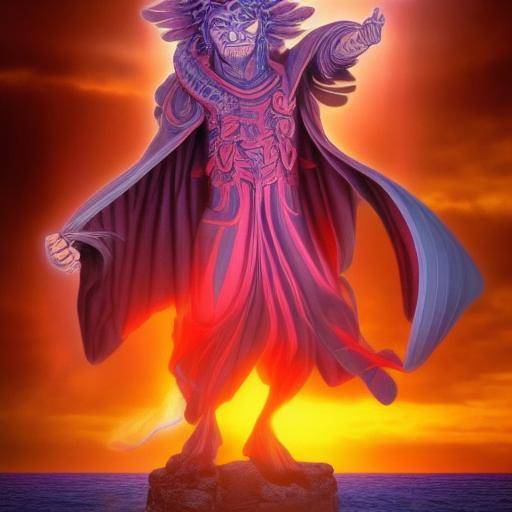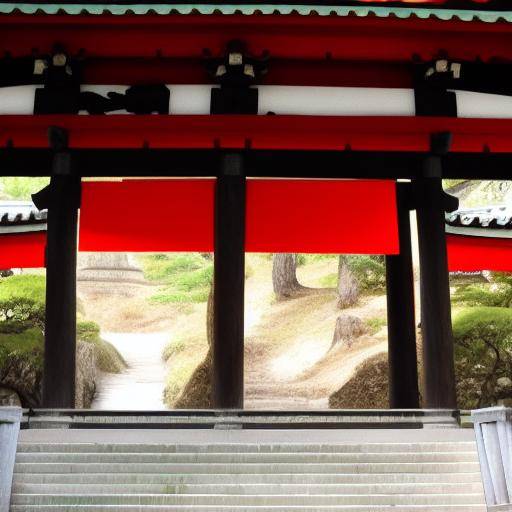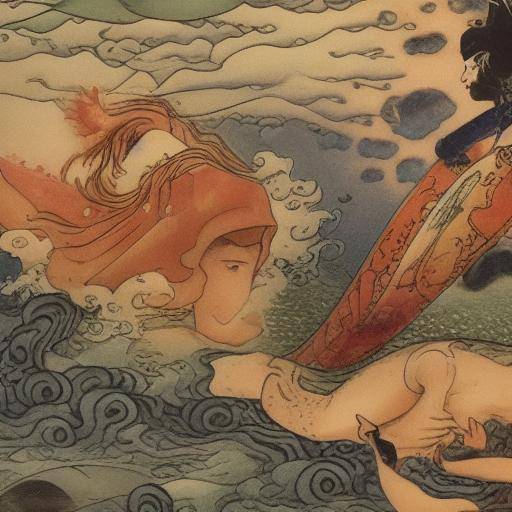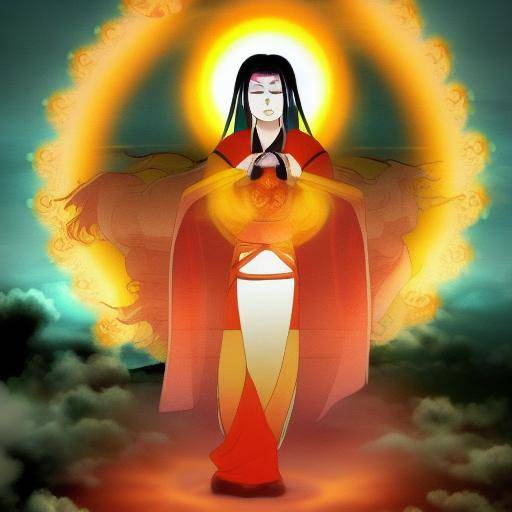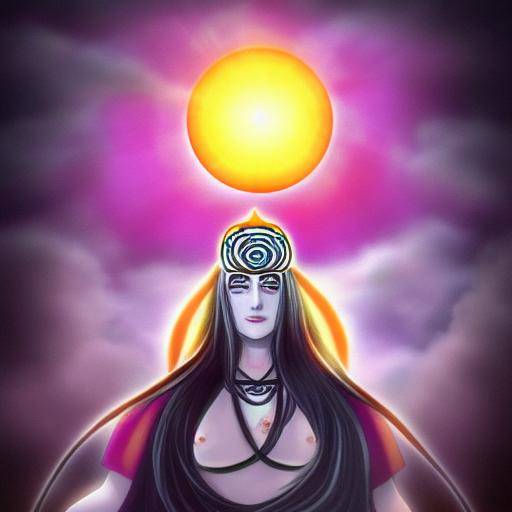
Japanese mythology is full of divine beings and mystical entities that exert a profound influence on Japan's culture and society. Among these deities, highlights Amaterasu, the venerated sun goddess whose impact on Japanese mythology and everyday life is impressive. In this article, we will explore in detail the fascinating history, myths and influence of Amaterasu, the sun goddess, in Japanese mythology.
Introduction to Amaterasu
The name "Amaterasu" comes from the combination of "ama" which means "heaven" or "gods" and "terasu" which translates as "light". Thus, Amaterasu is known as the sun goddess and represents the brightness and vital energy emanating from the king's astro. Its importance in Japanese mythology is comparable to deities such as Zeus in Greek mythology or Ra in Egyptian.
Amaterasu's story goes back to immemorial times and forms part of Japan's founding myths. His episodes and feats are recorded in the Kojiki and the Nihon Shoki, two ancient texts that collect the mythology and early history of Japan.
Origin and Legacy of Amaterasu
Amaterasu is the daughter of Izanagi and Izanami, two primordial deities in Japanese mythology. According to legend, he was born of Izanagi after his purification after his descent into the kingdom of the dead. Since her birth, Amaterasu radiated a dazzling light that made her the sovereign of heaven.
The influence of Amaterasu goes beyond its role as a sun goddess, since in Japanese mythology it is considered the divine ancestor of the Japanese imperial line. This connection between the goddess and the imperial ancestrality has consolidated its importance within Japanese culture and identity.
The Legend of Amaterasu and His Myths
One of the most famous stories related to Amaterasu is the myth of hiding in the cave. According to legend, Amaterasu, afflicted by the intractable behavior of his brother Susanoo, hid in a cave, plunging the world into darkness. The other gods, concerned about the absence of sunlight, urged a cunning plan to convince Amaterasu to leave her hiding place, returning the light to the world.
This mythological episode exemplifies the influence of Amaterasu on fundamental aspects of human life, such as sunlight and the fertility of the earth. The richness of the narratives and myths that revolve around Amaterasu reflect their crucial role in Japanese mythology and their deep interference in the cosmovision and cultural practices of the Japanese people.
The Goddess of the Sun in the News
Although the veneration of Amaterasu as a central deity of Japanese mythology persists in the practice of rituals and festivals, its influence transcends the religious and mythological sphere. Ensuring the fertility of the land and providing the necessary light for life, Amaterasu remains a symbol of prosperity and hope for many people in Japan.
In addition, Amaterasu's magnetism transcends the Japanese borders, driving the global interest in Japanese mythology and its rich tradition. The representation of Amaterasu in various forms of pop art, literature and culture, such as video games, is a testimony to its perpetual relevance in the contemporary world.
Conclusions
Amaterasu, the sun goddess, is much more than a deity venerated in Japanese mythology. His legacy survives through Japanese history, culture and identity, projecting its influence on many aspects of life. Exploring and understanding the importance of Amaterasu not only reveals its powerful significance in Japanese mythology, but also provides a greater understanding of the wealth and diversity of beliefs around the world.
Frequently asked questions about Amaterasu, the Goddess of the Sun and the Japanese Mythology
1. What connection does Amaterasu have with Japanese culture?
Amaterasu's connection to Japanese culture is deep and multifaceted. As one of the main deities in Japanese mythology, its influence extends to history, national identity, arts and everyday life. His legacy remains honored through ceremonies and festivals throughout Japan, a symbol of continuity and prosperity.
2. What is the role of Amaterasu in contemporary Japanese society?
In contemporary society, Amaterasu remains a cultural and religious icon. His image appears in festivals, shrines and temples. Moreover, its representation in modern media, such as video games and animation, demonstrates its continued influence on Japanese pop culture and its ability to resonate with new generations.
3. Why is Amaterasu the sun goddess considered?
Amaterasu is considered the sun goddess because of her role as the entity that bestows light and life on the world. Its radiant presence in Japanese mythology symbolizes the importance of solar energy for the fertility of the earth and the prosperity of mankind.
4. How is veneration celebrated to Amaterasu today?
The veneration of Amaterasu is manifested through festivals and rituals that honor her role as a sun goddess and protector of Japan. A notable example is the Aoi Matsuri Festival in Kyoto, where prayers and dances are offered in honor of the goddess.
5. What is the importance of Amaterasu's history in understanding Japanese mythology?
Amaterasu's story is fundamental to understanding the values and beliefs rooted in Japanese mythology. Their myths highlight the importance of harmony, respect for nature and the connection between the gods and the earthly world, fundamental aspects of the Japanese worldview.
6. What is the relationship between Amaterasu and other deities in Japanese mythology?
Amaterasu is connected to other prominent deities, such as Susanoo and Tsukuyomi, through family relationships and shared myths. These connections enrich Japanese mythology with complex narratives and symbolisms that outline divine interactions and their influence on human reality.
Concluding this journey through the myths and the relevance of Amaterasu, it is clear that her legacy as the powerful sun goddess is an integral part of Japan's cultural upholstery. Its influence on Japanese mythology and its resonance in contemporary society are wills of its lasting importance. In understanding and appreciating the figure of Amaterasu, a fascinating window is revealed to the wealth of Japanese mythology and beliefs that have shaped a nation over the centuries.

